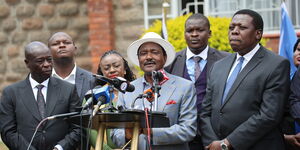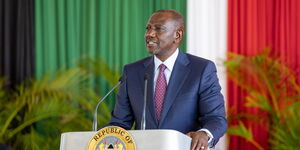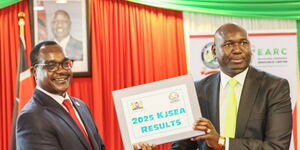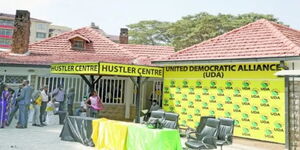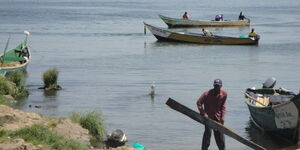President William Ruto has announced plans to extend the Nairobi–Nakuru–Mau Summit Highway to cover more western counties, including Kericho, Kisumu, Uasin Gishu, and Busia, amid growing public debate over the Public-Private Partnership (PPP) model being used to finance the project.
Speaking during the launch of the Mau Forest Complex Integrated Conservation and Livelihood Improvement Programme in Nakuru County on Monday, President Ruto said the government was committed to ensuring the road serves many Kenyans beyond Nakuru.
“Next month, the Nairobi–Nakuru–Mau Summit road will begin. I do not want the road to end at Mau Summit but to extend to Kericho, Kisumu, Eldoret, and Malaba,” Ruto announced, noting that the project is a key part of his administration’s plan to improve connectivity and boost trade across the corridor.
Additionally, the President defended the use of the PPP model, saying it was the only sustainable way to deliver major infrastructure projects without overburdening the national budget.
“We cannot continue as usual if we want to hit great development milestones. That is why we found it important to bring in the private sector,” he said.
Infrastructure fund and PPP
According to Ruto, the government’s current fiscal space could not accommodate such a large project under traditional budgetary allocations. He revealed that the state would instead explore new financing avenues, such as a special Infrastructure Fund, to mobilise resources from capital markets.
The Head of State asked MPs to hasten the process of entrenching the Infrastructure Bond into law to enable the government to deliver on its development pursuits in time.
The Nairobi–Nakuru–Mau Summit highway will feature a four-lane dual carriageway from Nairobi to Naivasha, passing through Mai Mahiu, with a major interchange at Naivasha. The section from Naivasha to Nakuru will be expanded into a six-lane dual carriageway.
Ruto stated that the road will play a vital role in decongesting traffic on the busy Nairobi–Nakuru corridor and reducing travel time for motorists and cargo transporters. He added that the project aligns with the government’s agenda of modernising transport infrastructure and promoting regional integration.
Construction Approval
The National Treasury has given the green light for the construction of the Rironi-Mau Summit highway, following the approval of the project proposal by the National Treasury's Public-Private Partnership (PPP) Committee.
This is after the PPP Committee established that the feasibility report submitted by China Road and Bridge Corporation (CRBC) and National Social Security Fund Trustees (NSSF) met all the requisite conditions.
Road Tolling
However, some stakeholders have raised concerns over the PPP financing model, arguing that it could result in high toll fees for motorists and the absence of alternative non-toll routes for road users.
Among those opposing the project is the Motorists Association of Kenya (MAK), which has criticised the government’s decision to hand over the construction and management of the highway to a private consortium. The association described the move as discriminatory and a threat to Kenya’s sovereignty.
Meanwhile, motorists using the upcoming Rironi–Mau Summit Expressway will pay a toll rate of at least Ksh8 per kilometre, according to disclosures by the Kenya National Highways Authority (KeNHA).
The authority noted that the toll rate will be subject to an annual adjustment of one per cent to cater for inflation and exchange rate fluctuations.


